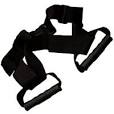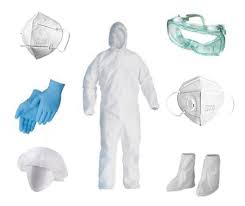Mastering the Art of Parking: The Essential Guide to Motorcycle Kickstands

The Importance of a Motorcycle Kickstand
Motorcycle kickstands are an essential component of any bike, providing stability and convenience when parking or stopping. These simple yet crucial devices play a significant role in ensuring the safety and security of your motorcycle.
One of the primary functions of a kickstand is to support the weight of the motorcycle when it is stationary. By propping up one side of the bike, the kickstand prevents it from tipping over and causing damage. This is especially important on uneven or sloped surfaces where balancing a motorcycle can be challenging.
Additionally, kickstands make it easier for riders to park their motorcycles quickly and securely. Instead of having to find a suitable surface to lean the bike against, riders can simply deploy the kickstand with a swift motion. This not only saves time but also reduces the risk of accidental falls or scratches.
Furthermore, motorcycle kickstands are designed to be durable and reliable. Constructed from robust materials such as steel or aluminium, kickstands are built to withstand the weight and pressure of a parked motorcycle. Regular maintenance and inspection of the kickstand ensure its proper functioning and longevity.
In conclusion, the humble motorcycle kickstand plays a vital role in ensuring the safety, stability, and convenience of your bike. By understanding its importance and taking care of this simple yet essential component, riders can enjoy peace of mind knowing that their motorcycles are securely parked and protected.
Essential Tips for Proper Motorcycle Kickstand Use and Maintenance
- Always ensure the kickstand is fully engaged before dismounting the motorcycle.
- Check the kickstand regularly for any signs of wear or damage.
- Avoid parking on soft or uneven surfaces that may cause the bike to tip over when using the kickstand.
- When parking on a slope, position the front wheel towards the higher side to prevent rolling off the kickstand.
- Do not sit on the motorcycle while it is supported only by the kickstand as it may not be stable enough.
- Practice using the kickstand in a safe environment to get accustomed to its positioning and operation.
- Consider investing in a larger footprint for your kickstand to provide more stability on various surfaces.
- Remember to retract the kickstand fully before riding off to avoid accidents.
Always ensure the kickstand is fully engaged before dismounting the motorcycle.
It is crucial to always ensure that the kickstand is fully engaged before dismounting the motorcycle. This simple yet essential tip can prevent accidents and damage to the bike by providing stability and support when the motorcycle is stationary. By double-checking that the kickstand is securely in place, riders can avoid potential mishaps and enjoy a safer riding experience overall.
Check the kickstand regularly for any signs of wear or damage.
It is crucial to regularly inspect your motorcycle kickstand for any indications of wear or damage. By checking the kickstand frequently, you can identify and address any potential issues before they escalate. Signs of wear or damage may include cracks, bends, or loose components. Ensuring that your kickstand is in good condition not only enhances the stability and safety of your motorcycle but also helps prevent accidents or mishaps while parking or stopping. Regular maintenance and care for your kickstand will contribute to the overall longevity and performance of your bike.
Avoid parking on soft or uneven surfaces that may cause the bike to tip over when using the kickstand.
To ensure the stability and safety of your motorcycle when using the kickstand, it is crucial to avoid parking on soft or uneven surfaces that may lead to the bike tipping over. Choosing a firm and level parking spot can prevent accidents and damage by providing a secure foundation for the kickstand to support the weight of the bike effectively. By being mindful of where you park and selecting suitable surfaces, riders can enhance the reliability and functionality of their motorcycle kickstand while minimising the risk of unexpected mishaps.
When parking on a slope, position the front wheel towards the higher side to prevent rolling off the kickstand.
When parking your motorcycle on a slope, it is important to position the front wheel towards the higher side to prevent the bike from rolling off the kickstand. This simple tip can help maintain stability and ensure that your motorcycle remains securely parked, reducing the risk of accidents or damage. By following this advice, riders can enhance the effectiveness of their kickstand and enjoy greater peace of mind when parking on uneven surfaces.
Do not sit on the motorcycle while it is supported only by the kickstand as it may not be stable enough.
It is crucial to remember not to sit on the motorcycle while it is supported solely by the kickstand, as it may not provide sufficient stability. The kickstand is designed to support the weight of the bike when parked, but it is not intended to bear the additional load of a rider. Sitting on a motorcycle without proper support can lead to instability and potential accidents. Always ensure that the bike is securely parked on level ground before mounting or dismounting to maintain safety and prevent any mishaps.
Practice using the kickstand in a safe environment to get accustomed to its positioning and operation.
To ensure safe and efficient use of your motorcycle kickstand, it is recommended to practice deploying it in a secure environment. By familiarising yourself with the positioning and operation of the kickstand in a controlled setting, you can develop confidence and precision when parking your bike. Practising this essential skill will not only help prevent accidental mishaps but also enhance your overall riding experience by ensuring that your motorcycle is securely supported whenever you come to a stop.
Consider investing in a larger footprint for your kickstand to provide more stability on various surfaces.
When it comes to enhancing the stability of your motorcycle on different surfaces, a valuable tip is to consider investing in a larger footprint for your kickstand. By opting for a kickstand with a broader base, you can significantly improve the bike’s stability when parked on uneven or soft surfaces. This simple upgrade not only provides added security and peace of mind but also minimises the risk of the motorcycle tipping over. Investing in a larger footprint for your kickstand is a practical and effective way to enhance the safety and reliability of your bike while parked.
Remember to retract the kickstand fully before riding off to avoid accidents.
It is crucial to remember to retract the kickstand fully before riding off to avoid accidents. Failing to do so can result in the kickstand making contact with the ground while the motorcycle is in motion, leading to loss of control and potential accidents. By ensuring that the kickstand is securely stowed away before starting your ride, you can maintain safety and prevent any mishaps on the road. Always double-check that the kickstand is fully retracted to enjoy a smooth and trouble-free ride.

